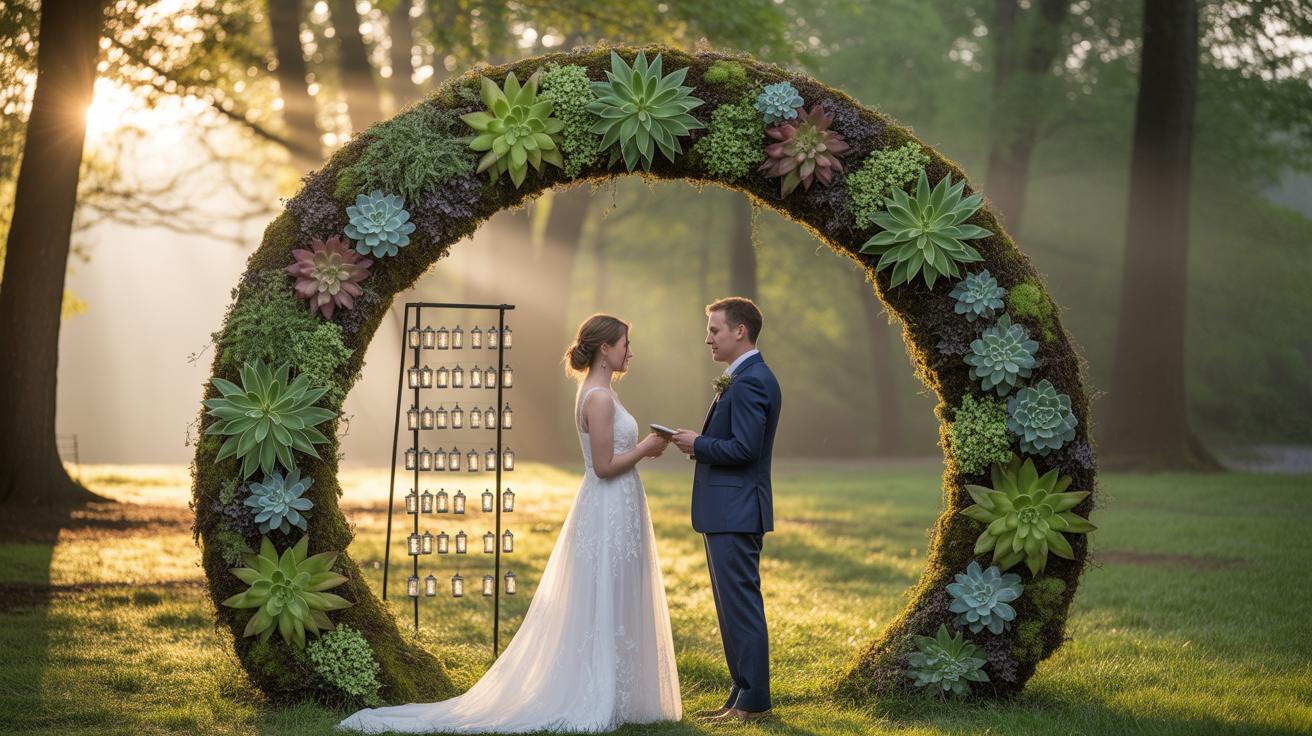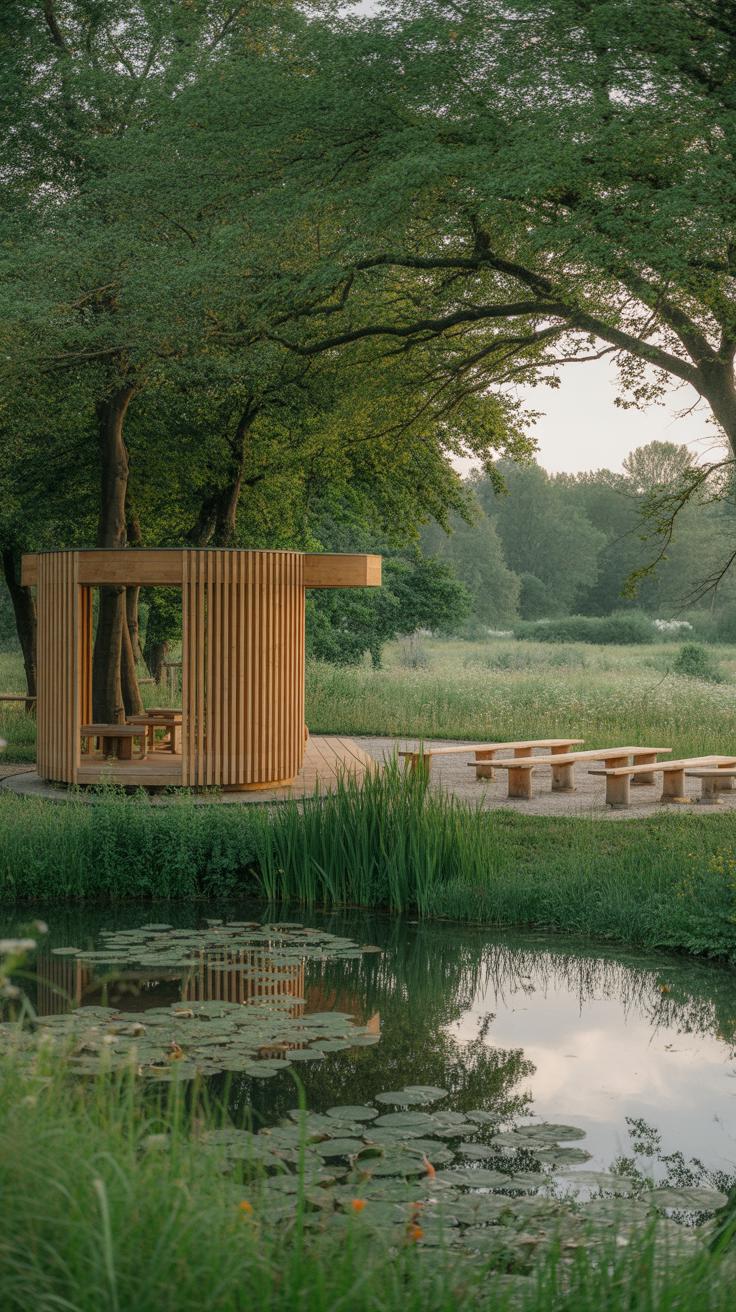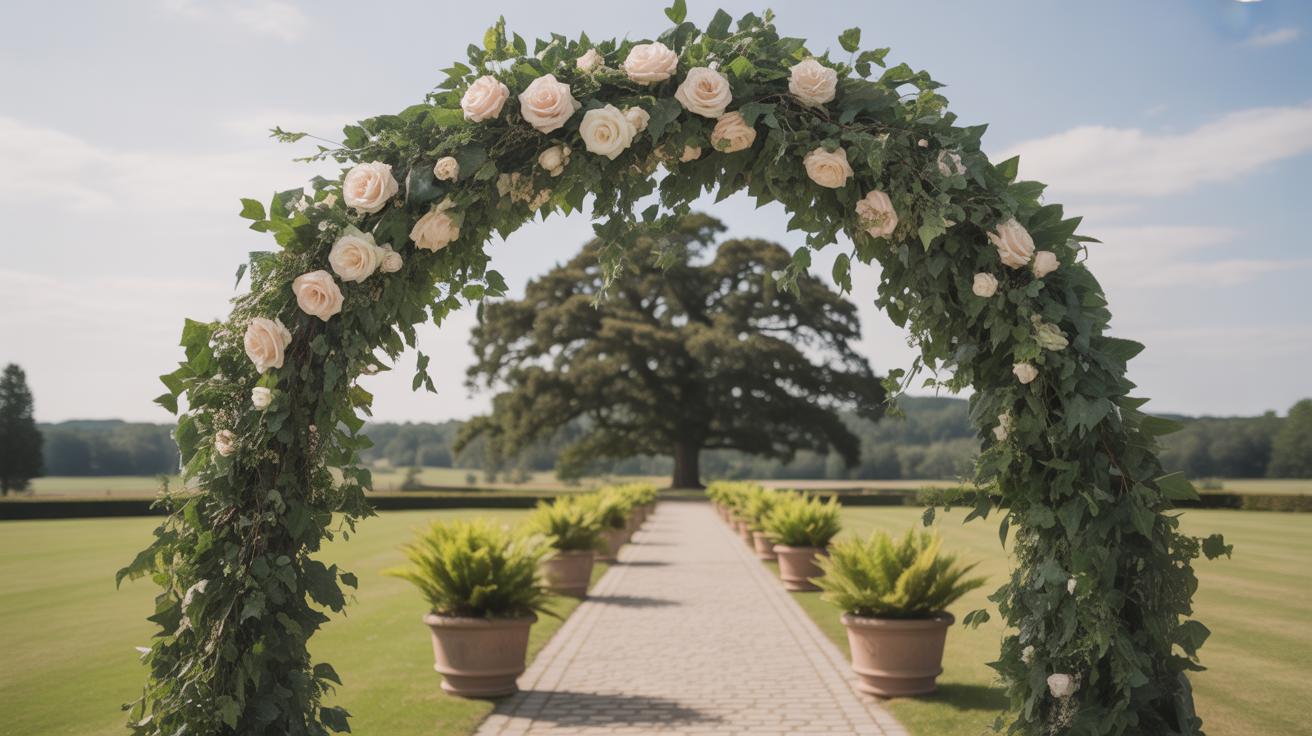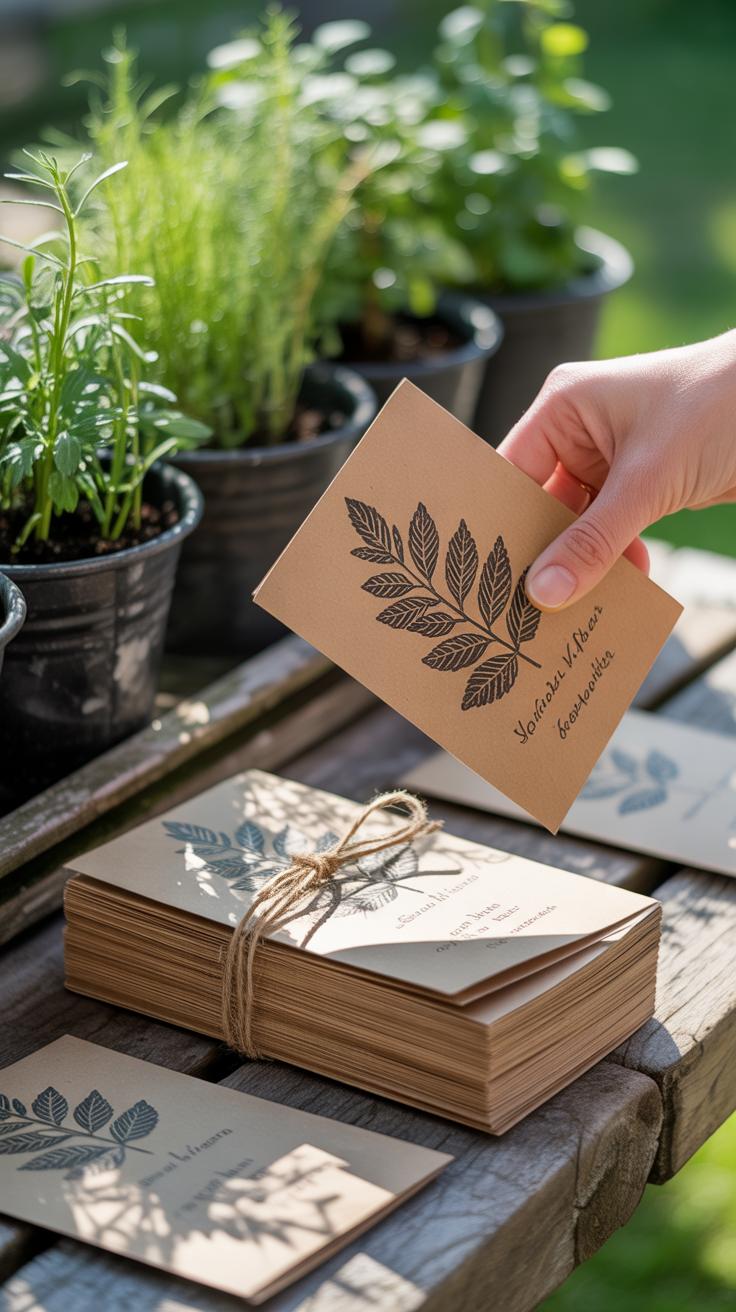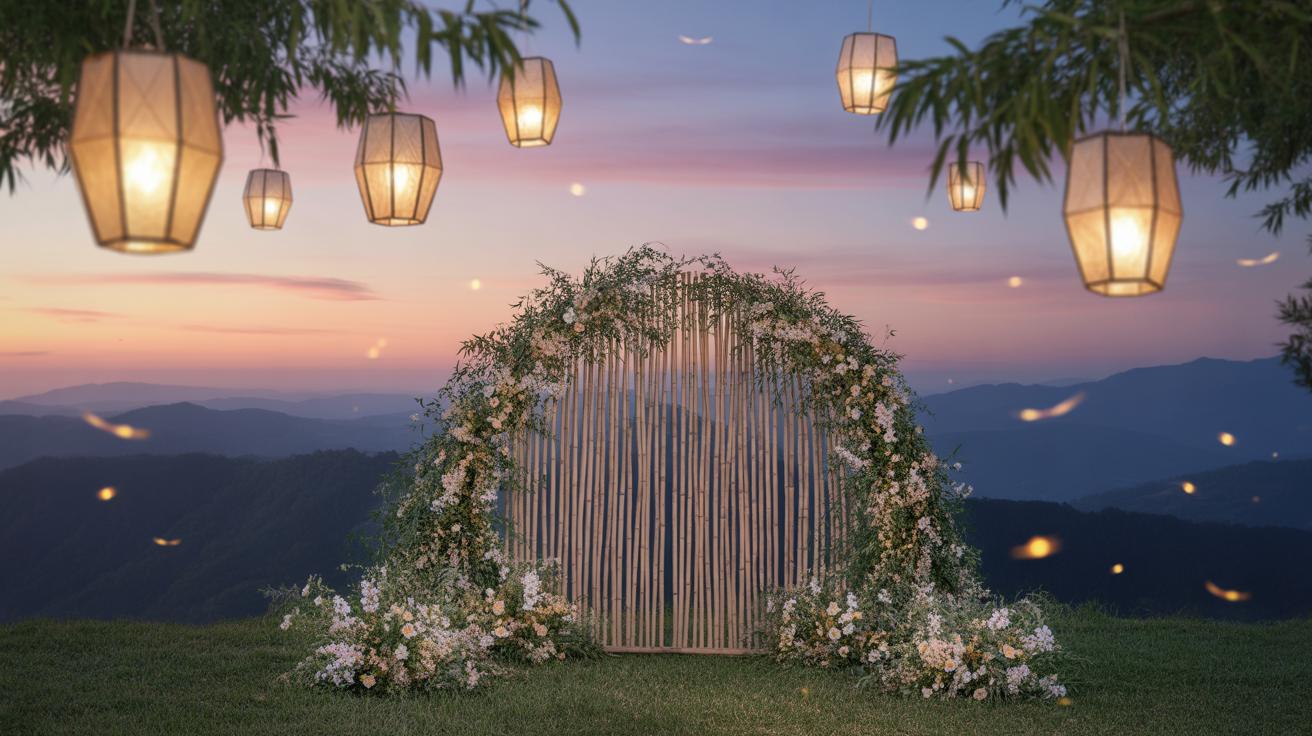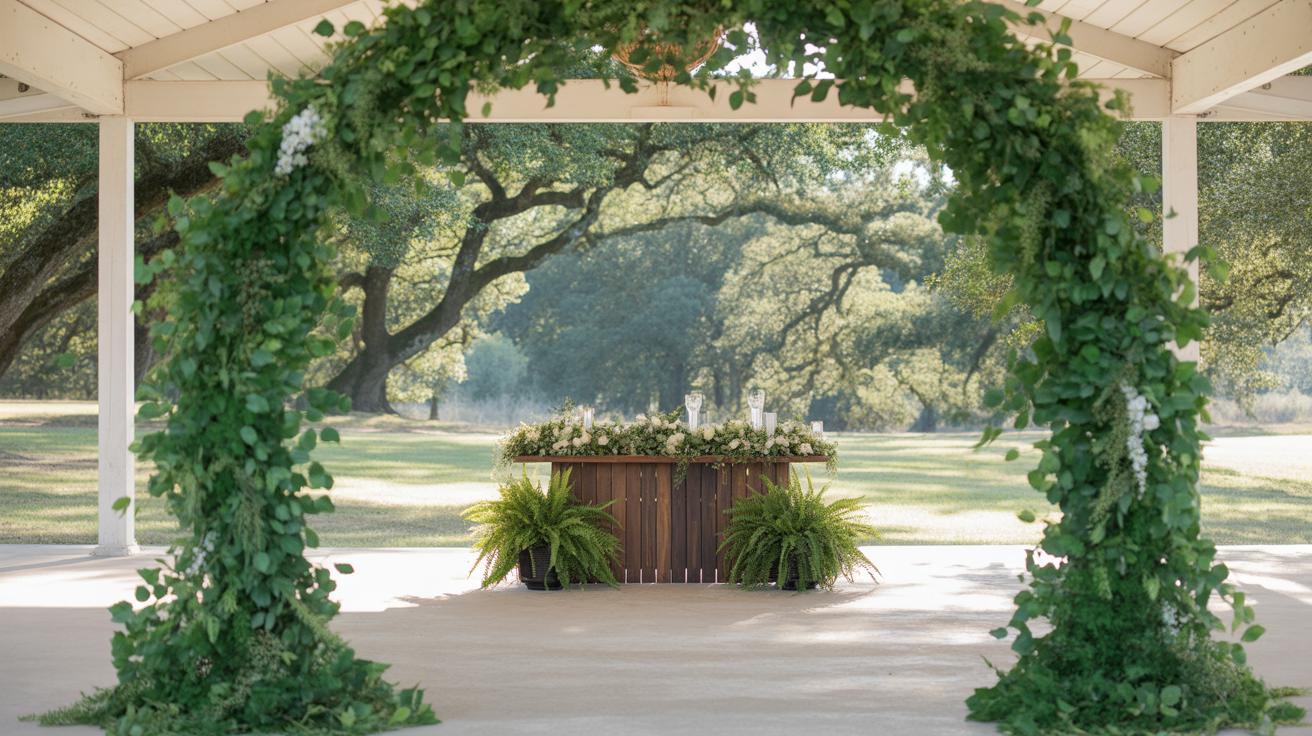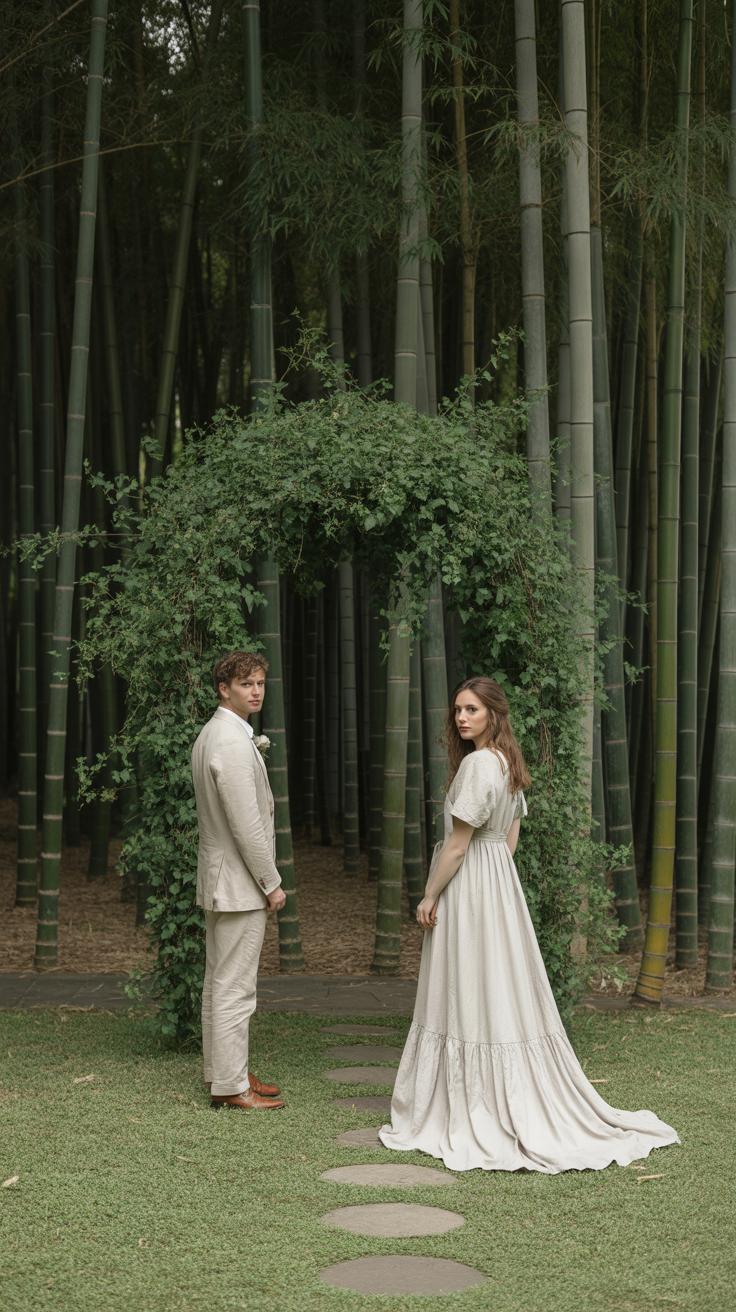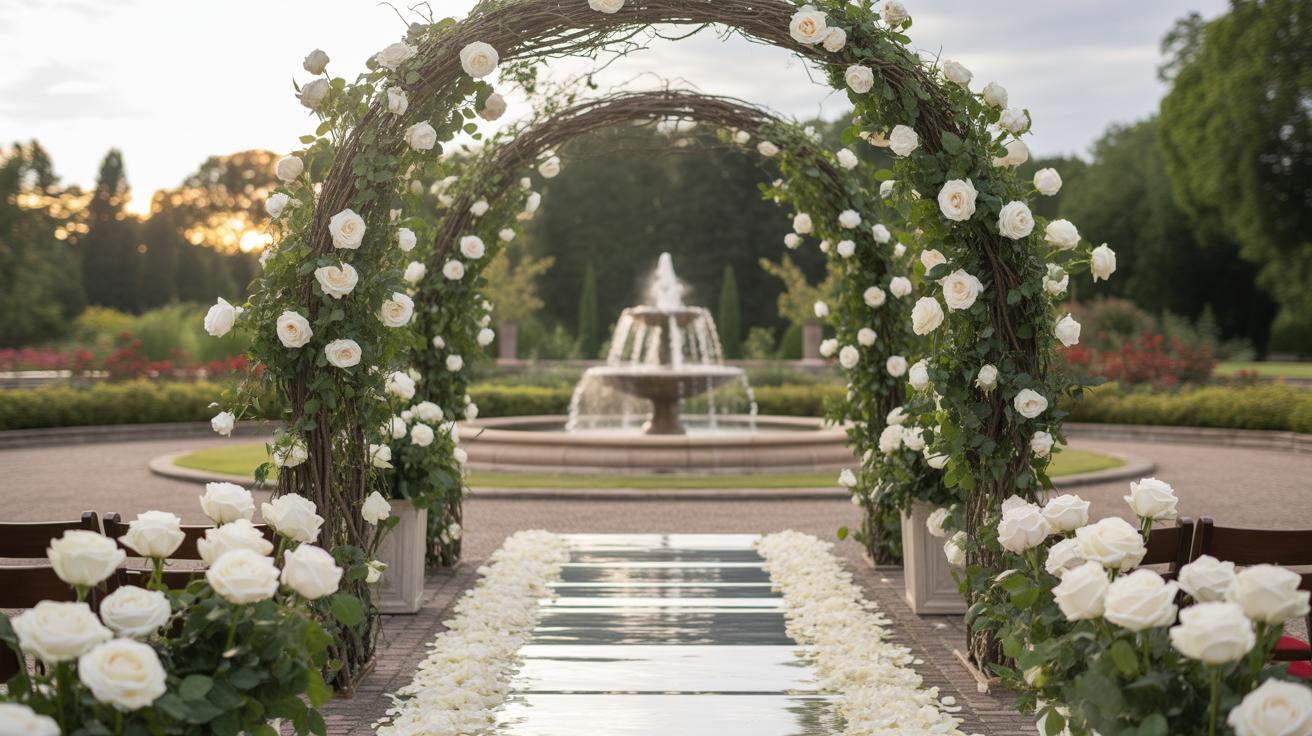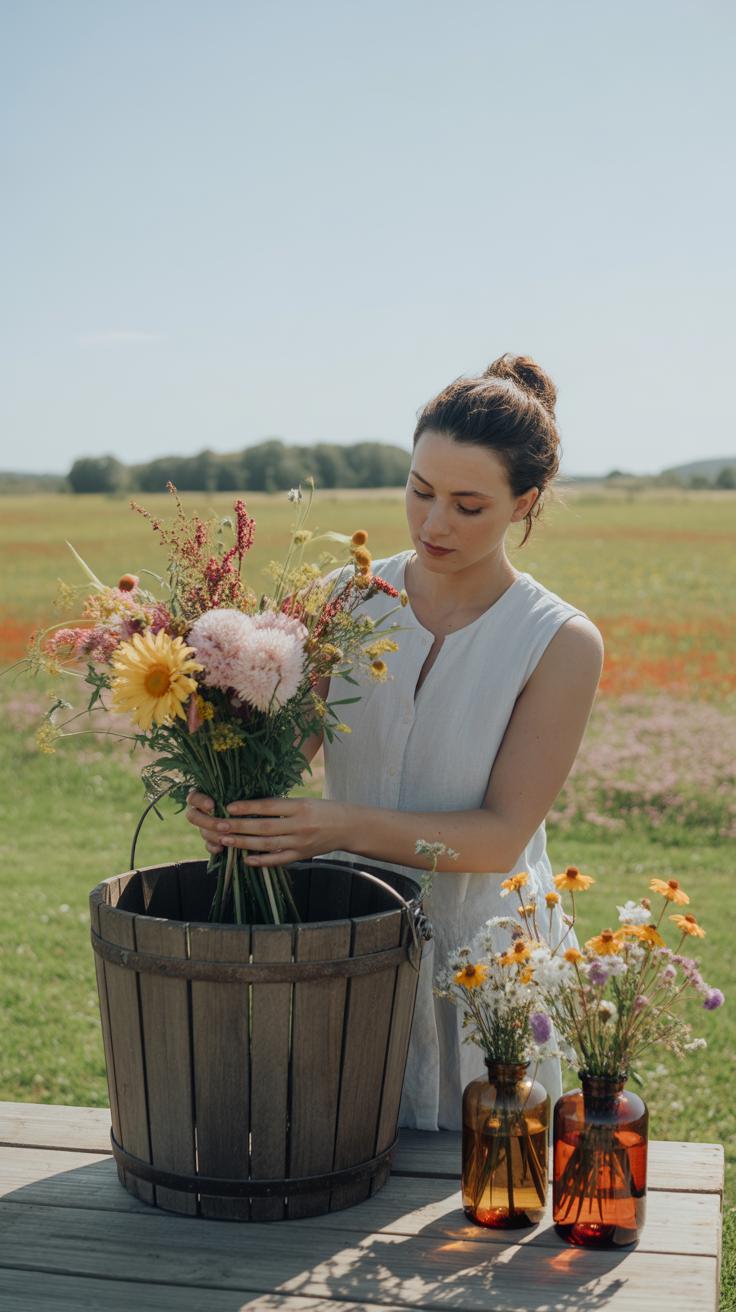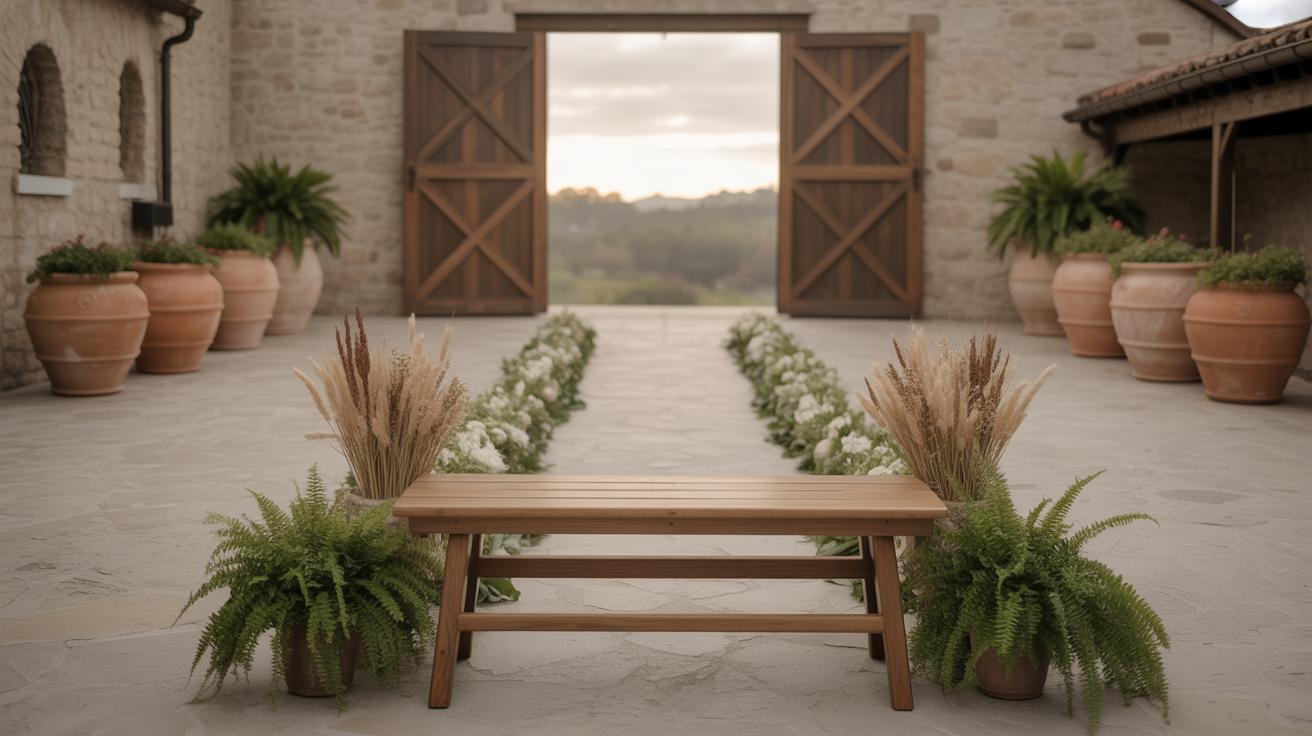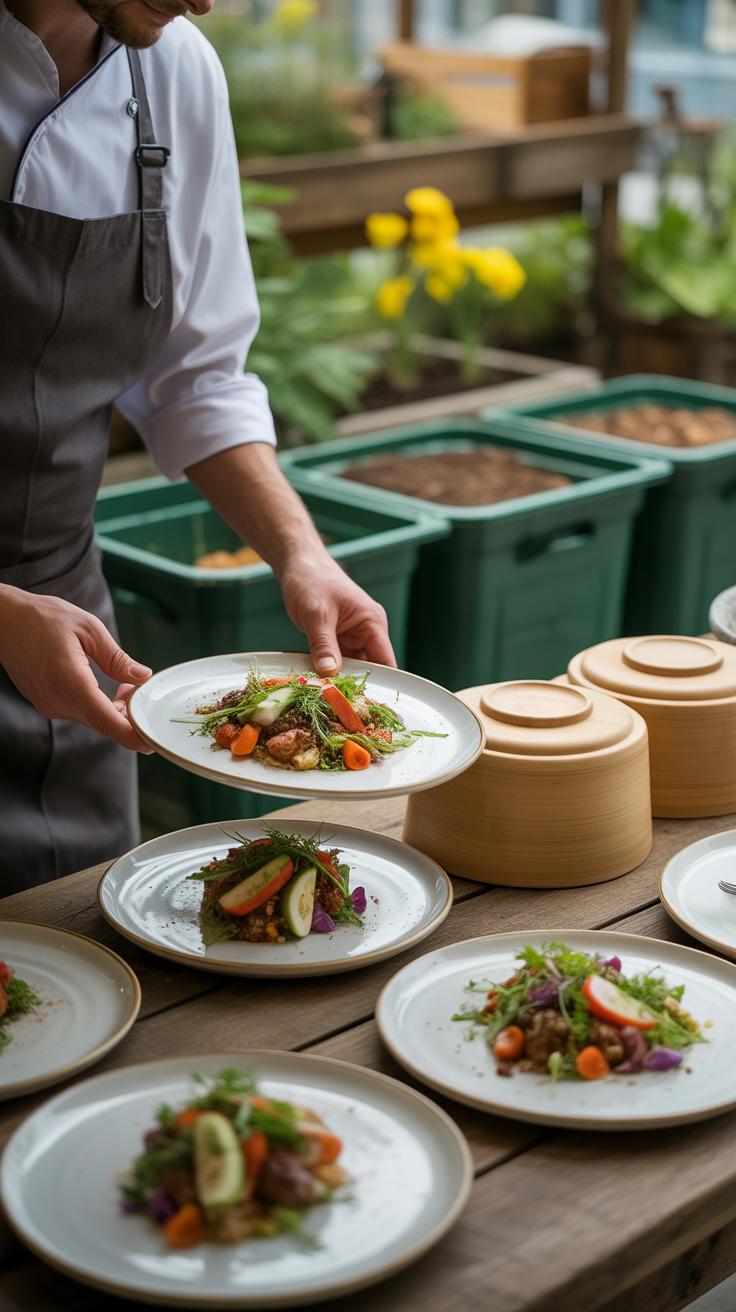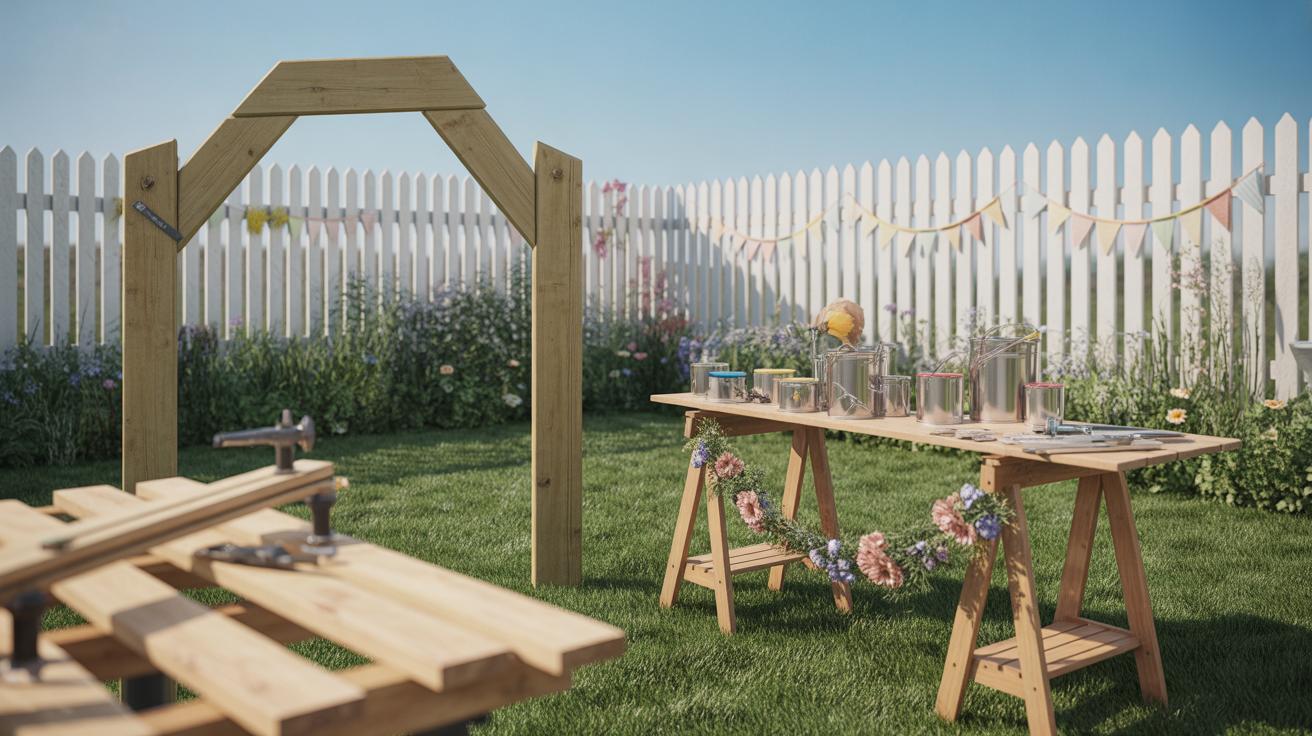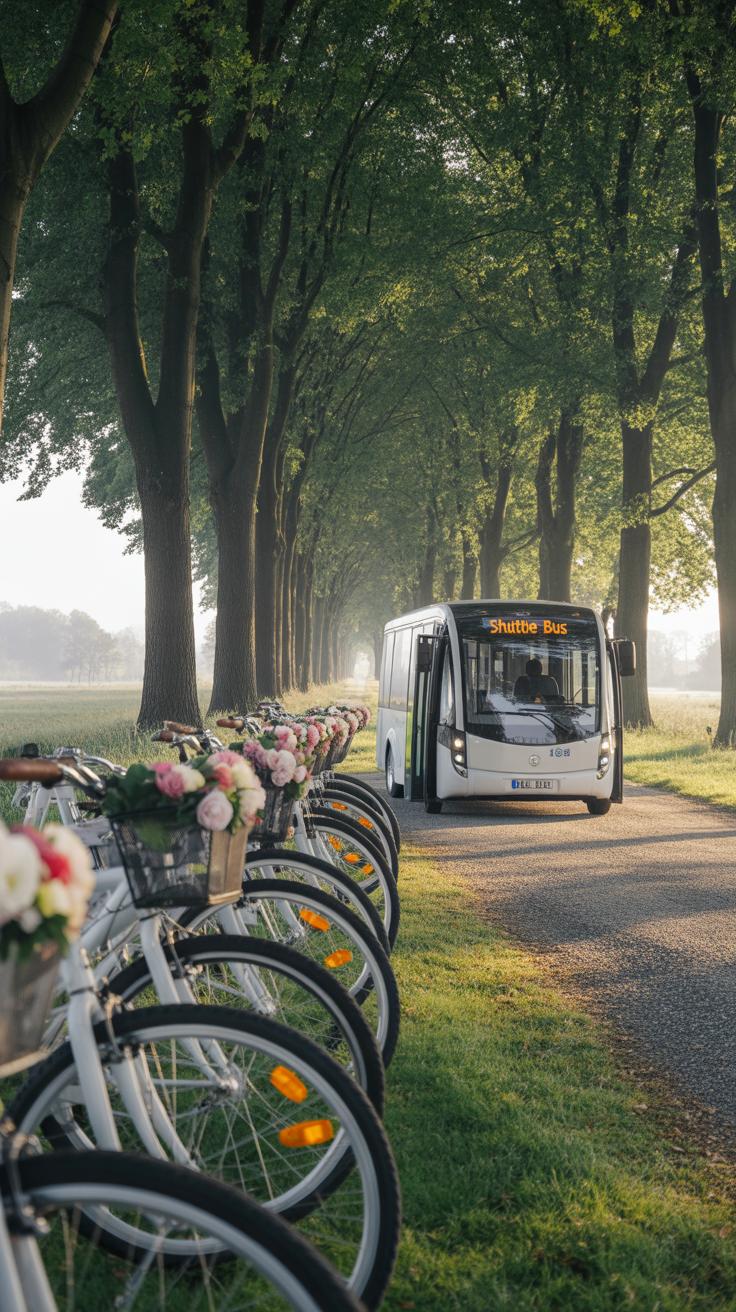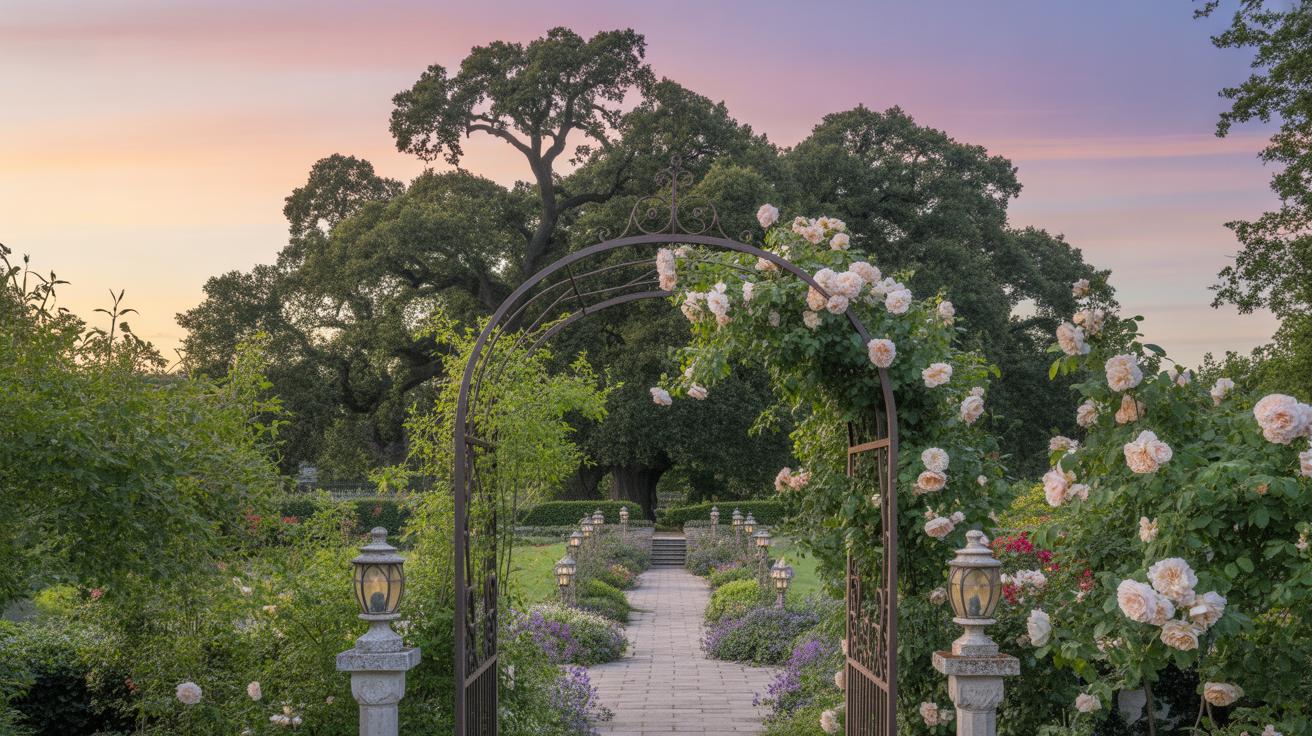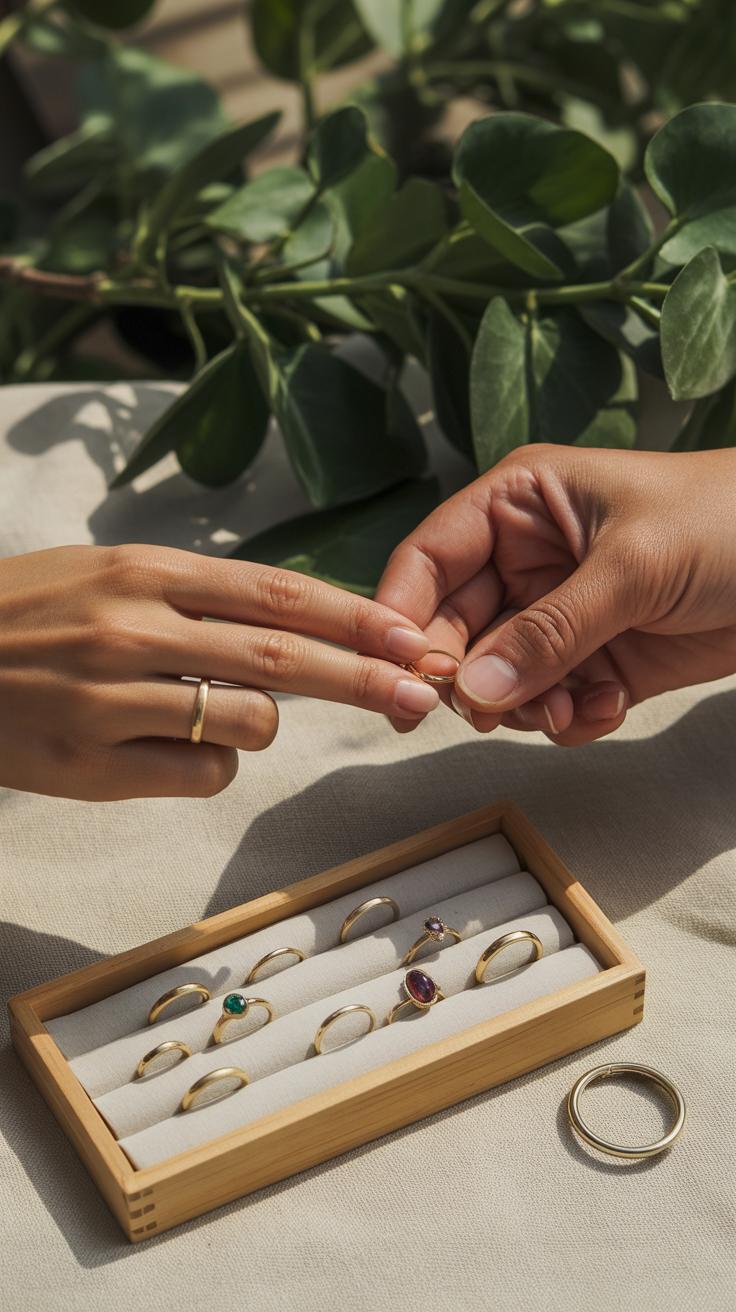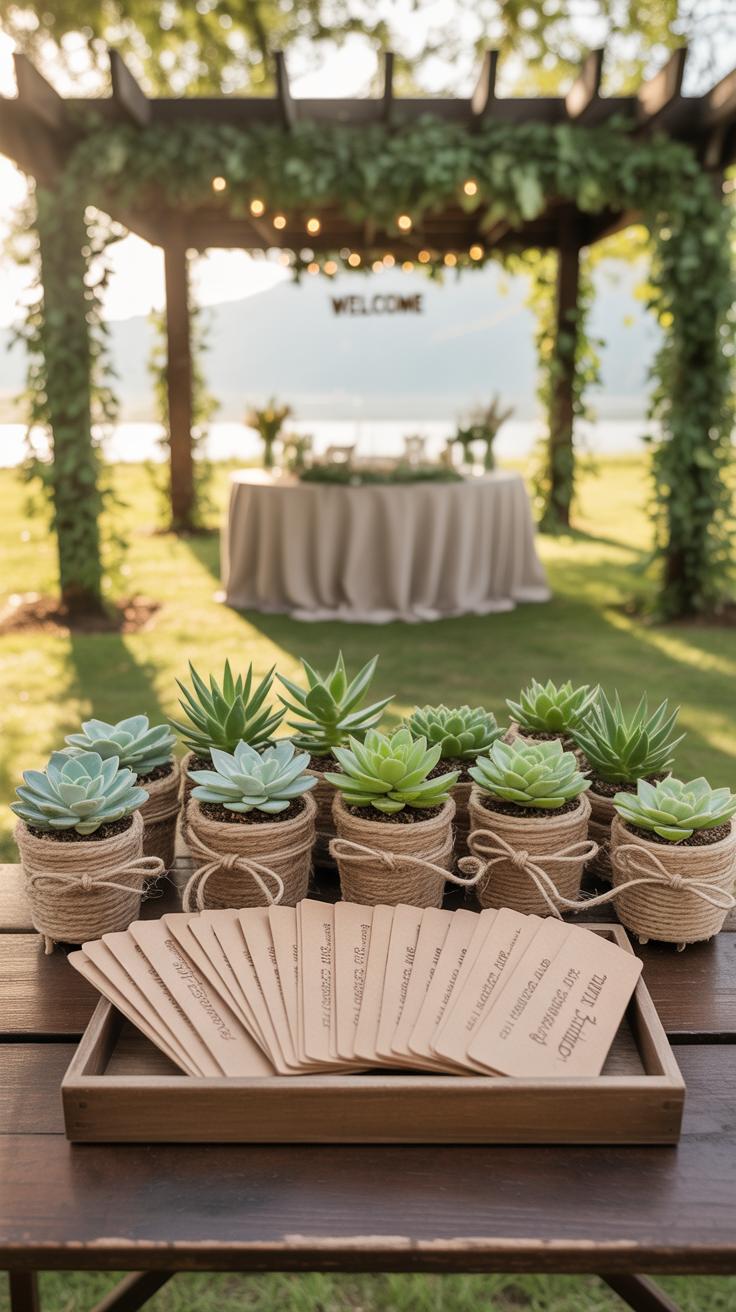Introduction
Planning your wedding gives you a chance to celebrate love and also care for the planet. A green wedding reduces waste and pollution, using smart choices that help nature flourish. It’s about making your day special without harming the earth. Think about using recycled paper for invitations, choosing local flowers, and picking venues that care about the environment.
You will learn how to pick good options for everything from clothes to food. This guide shows you simple steps to plan a green wedding that looks beautiful and feels right for you and the planet. Each part helps you understand what to do and why it matters.
Choose an EcoFriendly Venue
Picking the right venue for your wedding can greatly cut down its environmental footprint. When you choose a location that supports sustainability, you’re not just avoiding waste; you’re actively helping reduce energy consumption and pollution. Think about outdoor spaces—gardens, parks, or even farms. These places naturally connect your celebration with nature and often don’t require extra heating, cooling, or artificial lighting.
Some venues run entirely on renewable energy sources like solar or wind. Others commit to composting and recycling waste instead of sending everything to landfills. It’s worth asking venues directly about their practices, even if it feels a bit awkward at first. You might be surprised at how open some are to sharing their efforts.
Outdoor and local venues also cut down on travel emissions. Less driving means fewer carbon emissions—and that counts for guests too. Places like botanical gardens, vineyards, or community farms often provide beautiful, natural settings while supporting local ecosystems and economies.
When scouting for a venue, look for:
- Energy-saving lighting systems, like LEDs or motion sensors
- Water-saving devices such as low-flow toilets or irrigation controls
- Clear recycling and composting programs
- Use of locally sourced or organic catering services
- On-site renewable energy installations, like solar panels
Don’t be shy to ask venue managers how they handle waste or whether they have a sustainability policy. Even if a place doesn’t claim to be “green,” small efforts can add up, and your questions might encourage them to do more. Sometimes it’s less obvious than big signs or labels; you have to dig a little bit or just simply listen to how they describe their everyday operations. Your choice sends a message, and more venues might gear up for greener options if guests start demanding it.
Create EcoFriendly Invitations
Your wedding invitations set the tone for what’s to come, but they can also leave a mark on the environment—sometimes literally. If you want to reduce paper waste, there are a few ways to go about it without sacrificing elegance.
Use Recycled or Tree-Free Paper
Choosing recycled paper or tree-free alternatives, like hemp or cotton rag paper, can cut down on deforestation and lessen pollution. These materials often have a unique texture or color that makes the invite feel special, even a bit rustic. You can look for suppliers online or local print shops that specialize in eco-friendly stationery. Some vendors offer paper made from post-consumer waste, which means you’re supporting recycling efforts directly.
When designing your invitations, keep the layout simple to avoid excess ink use. Earth-toned inks or water-based dyes work well with recycled papers. You might wonder if it feels less polished compared to traditional cardstock, but in my experience, guests often appreciate the thought behind it more than anything else.
Go Digital to Save Trees
Digital invitations can save a surprising amount of paper and energy linked to printing and delivery. Emails or custom wedding websites allow you to include RSVP options, maps, and even photo galleries, all in one place. While some worry digital invites feel impersonal, a well-crafted design or a little video message can make them engaging and warm.
If you want to keep a personal touch, try sending a follow-up handwritten note or small printed detail on recycled paper, like a thank-you tag after the wedding. Digital invites also help with last-minute changes since they’re easy to update. Considering how many trees go into paper invites, going digital feels like a simple switch that can make a big difference.
Wear Sustainable Wedding Attire
Your wedding outfit can say a lot—not just about your style, but also about your values. Choosing sustainable fabrics is one way to make your attire more eco-friendly. Fabrics like organic cotton and recycled polyester reduce reliance on harmful chemicals and lower water and energy consumption during production. Organic cotton, for instance, avoids synthetic pesticides and fertilizers, which makes a difference for soil health and surrounding ecosystems.
You might wonder where to find these fabrics or dresses made from them. Small brands focused on sustainability often offer wedding dresses and suits crafted from organic or recycled materials—shops like Reformation or Christy Dawn come to mind. Some local designers might work with these fabrics too, so it’s worth exploring nearby options.
Renting or buying second-hand clothes offers another impactful choice. This approach keeps garments out of landfills and minimizes the resources needed for producing new ones. Rental services like Rent the Runway or local boutiques usually have a good selection of wedding attire for various tastes. And thrift stores or online marketplaces, like Stillwhite, often carry beautiful pre-loved gowns and suits that can be more unique than brand new pieces.
It might feel a little strange to wear something previously owned, but that’s part of the charm and a meaningful way to reduce waste. Have you considered how much fabric and energy go into creating just one dress? Sometimes, reusing is simply better than starting anew. Of course, comfort and fit matter most—so try a few options before deciding what feels right for you.
Select Sustainable Flowers and Decorations
Choosing flowers for your wedding might seem simple, but it’s more impactful than you probably realize. Flowers often travel long distances, which means a lot of fuel and emissions just to get to your venue. If you pick local and seasonal blooms instead, you cut down on transport emissions and support growers who tend to use fewer chemicals. For example, ordering wildflowers from a nearby farm can be fresher and more vibrant, with none of that artificial pesticide residue that sometimes sneaks into imported varieties.
Seasonal flowers usually need less water and pesticides, too, since they’re naturally suited for your climate and time of year. It feels… right, somehow, using what’s actually available rather than forcing something out of season. But this choice also means your arrangements might look different depending on when you get married. That’s part of the charm.
If you want to go beyond cut flowers, think about decorations that last longer and create less waste. Potted plants make great centerpieces, and guests can take them home afterward, which makes your wedding décor a gift that keeps growing. I’ve seen weddings where every table had a small herb pot or succulent—it felt cozy and meaningful, and nobody ended up throwing wilted petals in the trash.
DIY decorations offer another path. You might make paper flowers, garlands from dried fruit, or fabric buntings. These can be pretty simple, even fun to craft with friends or family. Plus, they reduce the need to buy new things or toss out a bunch of single-use items.
So, what will your wedding bloom with? The local beauty of seasonal flowers, living plants, or handmade touches? It’s weird to think choices this small can matter, but they do — and your decision could inspire others to rethink their own celebrations.
Plan a ZeroWaste Menu
Choosing the right menu for your wedding takes more than just thinking about taste. It’s about how each bite impacts the environment. A zero-waste menu means minimizing leftovers and packaging waste while still treating your guests to delicious food.
Choose Local and Organic Ingredients
Buying food from nearby farms means fewer miles traveled, which reduces fuel consumption. Organic farms often avoid synthetic pesticides and fertilizers that can harm soil and water. You might want to include dishes that rely on seasonal produce—think roasted root vegetables in fall or fresh berry salads in summer.
It’s tempting to opt for exotic ingredients, but local options often taste fresher and support the community. Farmers’ markets can be great places to find inspiring ideas. For example, a simple heirloom tomato bruschetta or a grain bowl with local greens highlights this approach well.
Offer Plant-Based Menu Options
Plant-based meals have a smaller footprint than meat or dairy-heavy dishes, requiring less water and land. And no, they don’t have to be boring or bland. You can serve richly spiced lentil stews or creamy mushroom risottos that even meat-lovers enjoy. It’s about creativity more than restriction.
Inviting guests to try plant-based options raises thoughtful questions about our choices without making anyone feel pressured. Maybe offer mixed platters so everyone can sample—after all, food should bring people together, not separate them. Loosening rigid expectations can make the menu feel more inviting and genuine.
Provide EcoConscious Transportation
Encourage Carpooling and Shuttles
Getting your guests to the wedding can actually become one of the biggest sources of emissions. But when you encourage carpooling or provide shuttle services, you cut down on pollution—and on parking headaches, which nobody really wants to deal with.
Try asking guests who live nearby to team up or share rides. Maybe create a simple sign-up sheet or a group chat. You could even arrange a few shuttle buses from key locations, like hotels or transit stops, to the venue. Having a few big vehicles doing one round trip beats tens of cars circling around, looking for parking.
I remember attending a wedding where shuttles ran smoothly and honestly, it felt more social—people got to chat and relax instead of stressing about driving. Plus, it reduced the number of cars needing parking space, which felt like a small but meaningful win for the environment.
Pick Venues Near Public Transit
Whenever possible, choose a venue close to train or bus routes. It might not be the first thing you think of, but it makes a real difference. Not only does this ease access for guests who prefer to skip driving, it lowers the overall carbon footprint of the event.
Venues near public transit can be surprisingly practical. Guests who rely on buses or subways don’t have to worry about renting cars or arranging rides, and that can encourage more sustainable choices without much extra effort on their part. It also means fewer cars on the road around your venue, which can reduce traffic and noise—something your neighbors might appreciate.
Of course, not everyone takes transit, but by offering this option, you open the door to greener travel habits. It’s a nudge towards thinking beyond the usual car trip, which might just stick with some guests after your big day.
Choose Ethical Wedding Rings
When you think about wedding rings, you probably picture shining gold bands or sparkling diamonds, but have you ever wondered where those materials come from? Traditional gold mining often causes a lot of environmental harm. It involves digging deep into the earth, which disrupts ecosystems, pollutes water sources, and uses huge amounts of energy. Mining can also lead to chemical runoff, harming wildlife and local communities. It’s a tough reality that doesn’t sit well with many who want their wedding to reflect care for the planet.
Use Recycled Metals for Rings
One way to avoid these issues is by choosing rings made from recycled metals, like gold or silver. This means the precious metals come from old jewelry or industrial scraps, melted down and reshaped—so no new mining is needed. It’s a great choice if you want to reduce waste and limit environmental damage. Plus, recycled gold is often indistinguishable from newly mined metal once refined.
Finding jewelers who work with recycled metals isn’t as hard as you might think. Many ethical jewelers highlight this option, and some specialize in it. You can even ask local artisans if they source their materials responsibly. I’ve visited a few shops that clearly label recycled options, and it felt good knowing the rings ahead of me had a smaller environmental footprint.
Consider Lab-Grown or Alternative Stones
Another option is the stone inside the ring. Lab-grown diamonds and other cultivated gems have become increasingly popular. These stones are created in controlled environments using technology that mimics natural processes, but without the environmental damage of mining. They save water, cut down on pollution, and reduce energy consumption compared to traditional mining methods. Some people worry lab-grown jewels lack “authenticity,” but honestly, they can look just as beautiful.
Besides lab-grown diamonds, there are alternative stones like moissanite or sapphire that are ethically sourced or lab-created. Choosing these can lessen the strain on natural reserves and make your wedding ring a bit more unique. So, asking yourself about the origin of your ring’s materials isn’t just a question of style, but also one of ethical impact. It’s worth thinking about what your ring represents beyond its sparkle.
Give EcoFriendly Wedding Favors
Choosing wedding favors that respect the environment can feel a bit tricky, but it’s actually quite rewarding. Guests appreciate gifts they can use beyond the day—something meaningful, not just another trinket to toss later.
Give Edible or Plantable Favors
Think about favors that guests can eat or plant. Homemade jams or local honey stand out—they’re personal and lessen packaging waste. Plus, who doesn’t love tasting something made with care? Seed packets also work well—offering wildflowers or herbs invites guests to nurture life long after the ceremony is over. These small acts create a lasting connection, not just a one-time thank you.
Select Reusable or Upcycled Gifts
Reusable favors keep clutter away and give your guests something practical. Items like bamboo utensils or cloth bags slip into everyday use effortlessly. Favors made from recycled materials carry a story themselves—maybe recycled glass coasters or notebooks crafted from scrap paper. They remind everyone to think twice about consumption. Sometimes, a simple, sturdy item feels more genuine than something ornate. It’s that quiet message of care that counts.
Conclusions
Your wedding can be joyful and kind to the environment. By choosing reusable, local, and sustainable options, you reduce the waste that often comes with big celebrations. Small choices like digital invites or plant-based meals add up to a big difference for nature.
Your efforts send a message about love for each other and for the world you share. Planning a green wedding means you start your life together with respect and care for the earth. It’s a way to celebrate and protect the future for everyone.

